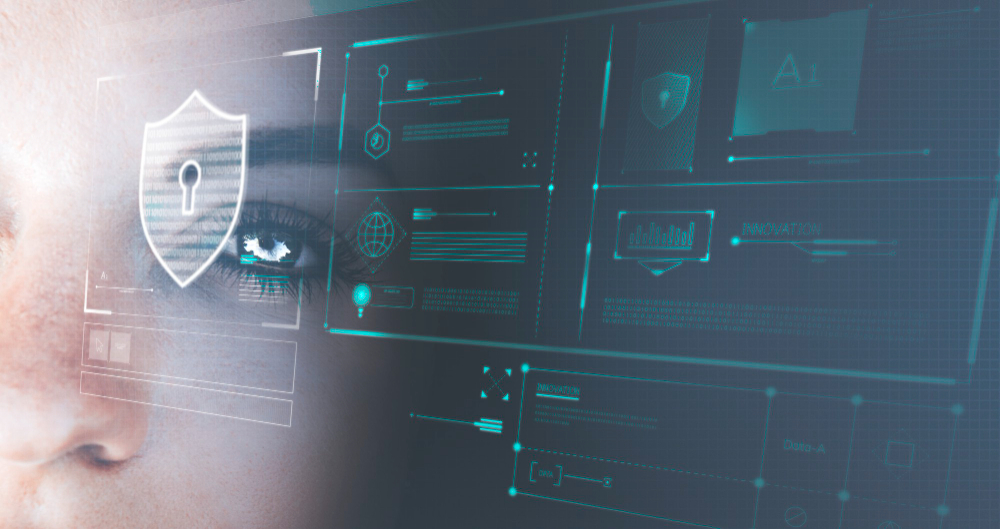
AI-Enhanced Cybersecurity
As cyber threats grow in sophistication and scale, traditional security measures are no longer enough to keep businesses protected. At Akross IT, our AI-Enhanced Cybersecurity solutions leverage cutting-edge machine learning, behavioral analytics, and real-time threat intelligence to defend your digital ecosystem.


Key Features
Real-Time Threat Detection
AI continuously scans your environment for suspicious patterns and anomalies, enabling instant identification of threats that evade conventional security tools.
Behavioral Analytics and User Profiling
Monitor user and system behavior over time to detect deviations, insider threats, or account compromise based on behavior rather than static rules.
Automated Incident Response
Respond to threats faster with automated workflows that isolate affected systems, revoke access, or trigger alerts with minimal human intervention.
Advanced Phishing and Malware Detection
Use natural language processing and deep learning to detect phishing attempts, malicious attachments, and zero-day malware threats in emails and files.
Threat Intelligence Integration
Enrich your cybersecurity posture with global threat feeds and AI-enhanced analysis to identify and block emerging attack patterns in real time.
Continuous Risk Scoring
Dynamically assess and score the risk levels of users, devices, and applications, prioritizing security resources based on real-time threat posture.
Our AI-Enhanced Cybersecurity Process
Security Posture Assessment and Data Mapping
We start by analyzing your current cybersecurity landscape, including existing tools, infrastructure, and known vulnerabilities.
Our team identifies the data sources critical to AI analysis—such as log files, user activity data, endpoint telemetry, and network flows. We then map these to a centralized threat intelligence architecture.
This foundational step enables a holistic view of your digital ecosystem and establishes the necessary data streams to power AI-driven threat detection and response.
AI Model Deployment and Training
Once your security posture is mapped, we deploy custom AI models tailored to your environment.
These models are trained using historical security events, attack simulations, and behavior baselines specific to your organization.
Whether it's detecting ransomware behavior, privilege escalation, or unusual access patterns, the models are continuously refined for precision and contextual awareness. This ensures detection is accurate, fast, and tailored to the specific threats most relevant to your business.
Continuous Monitoring and Behavioral Analytics
Our system performs 24/7 monitoring of user activity, file movements, network traffic, and access logs.
AI models compare real-time behavior with learned baselines to identify anomalies that signal a potential threat.
Unlike rule-based systems, this behavioral approach can detect previously unseen attack vectors—such as insider threats or credential misuse—by flagging actions that deviate from established norms, even if they haven’t triggered known signatures.
Threat Detection and Anomaly Correlation
As anomalies are detected, the system uses correlation engines to connect multiple low-level signals into meaningful threat indicators.
For example, a login from an unusual location followed by a large data export and privilege escalation would be flagged as a coordinated threat.
This layered detection approach significantly reduces false positives and provides rich context for security teams to understand the full scope and potential impact of each threat.
Automated Threat Response and Containment
When a validated threat is detected, predefined response workflows are automatically triggered.
These can include isolating endpoints, revoking access, disabling user accounts, or notifying administrators in real time. By automating initial response steps, we help reduce the time between detection and mitigation—minimizing damage and disruption.
The response system is adaptive, learning from each incident to fine-tune future actions and improve overall incident handling efficiency.
Threat Intelligence and Knowledge Integration
Our platform integrates with global and industry-specific threat intelligence feeds, allowing it to stay current with the latest tactics, techniques, and procedures (TTPs) used by cybercriminals.
This external intelligence is combined with internal telemetry to enrich AI models and improve threat identification accuracy. It also enables the system to anticipate emerging threats and proactively adjust defenses before an attack occurs.
Feedback Loop and Continuous Model Improvement
Post-incident analysis and ongoing feedback from analysts are fed back into the system, allowing it to learn from real-world outcomes.
Over time, the AI refines its understanding of what constitutes a true threat, becoming more efficient at detection and reducing false positives.
This continuous learning loop ensures that your cybersecurity defenses evolve alongside new threats, keeping your organization resilient and agile in the face of ever-changing cyber risks.
Types of Security Enhanced by AI
Network Security
Detect lateral movement, port scanning, and data exfiltration attempts in your network with high accuracy and minimal false positives.
Endpoint Protection
Monitor device behavior to detect ransomware, unauthorized access, and unusual system changes even when disconnected from the network.
Cloud Security
Identify misconfigurations, unauthorized access, and anomalous API usage across your cloud services using AI-driven visibility and alerts.
Application Security
Automatically scan code, APIs, and user interactions to detect vulnerabilities and block exploits before they reach production.
Identity and Access Management (IAM)
Leverage AI to detect unusual login behavior, flag compromised credentials, and recommend policy changes to minimize attack surfaces.




